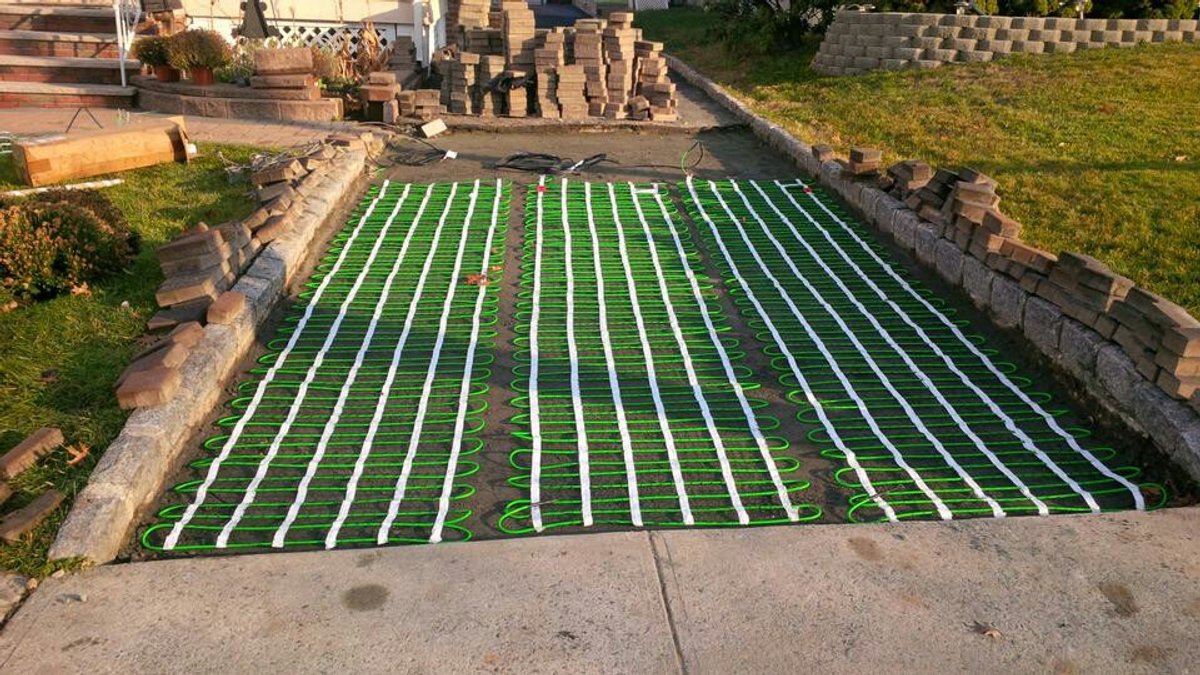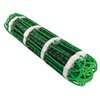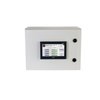Snow Melt PowerMat 240V, 3 x 10 ft., 30 sq.ft., 6.25A - Refurbished
There are currently no refurbished version of this product.
Notices
Quebec Repairability Notice
Avis important pour les consommateurs du Québec:
WarmlyYours n’offre pas de services de réparation pour ce produit. Les seules pièces de rechange disponibles sont les kits de raccordement (splice kits) pour les câbles et les tapis de déglaçage ; aucune pièce de rechange n’est offerte pour les contrôleurs (snow melting controls). Si votre système de déglaçage (câbles, tapis ou contrôleurs) tombe en panne pendant la période de garantie, nous remplacerons l’unité complète conformément à notre politique de garantie. Notre équipe d’assistance technique est disponible 24h/24 et 7j/7 par téléphone pour toute aide à l’installation ou au dépannage. Pour plus de détails, consultez notre politique de retour. Cet avis est fourni conformément à la Loi sur la protection du consommateur du Québec, article 39 (telle qu’amendée en 2025).
Important Notice for Québec Consumers:
WarmlyYours does not provide repair services for this product. The only replacement parts available are splice kits for snow melting cables and mats; no spare parts are available for snow melting controls. If your snow melting system (cables, mats, or controls) fails within the warranty period, we will replace the entire unit according to our warranty policy. Our technical support team is available 24/7 by phone for installation and troubleshooting assistance. For full details, see our Return Policy. This notice is provided in accordance with Québec’s Consumer Protection Act, section 39 (as amended in 2025).
Snow Melt PowerMat Description
WarmlyYours snows melting mats safely and efficiently meltsnow and ice from walkways, patios, and driveways. These 3 x10 ft. 240 V snow melting mats provide 30 ft² ofcoverage. They feature a sturdy, corrosion-resistant, twin-conductor heatingelement affixed in a serpentine pattern to a polypropylene mesh backing,allowing for easy installation and even distribution of heat in asphalt,concrete or (mortar underneath) paver surfaces. Equipped with a 20-foot (6m) cold lead, WarmlyYourssnow melting mats generate 50 watts per square foot for dependable and efficientsnow melting performance and areCSA certified for outdoor use in Canadian and U.S. markets.
Learn more about snow melting systems. Perfect for heated driveways, patios, walkways and paths, accessibility ramps, or even stairs.
Specifications
Electrical
| Amps | 6.25 A |
| Ohms | 38.4 Ω |
| Voltage | 240 V |
| Watts | 1500 W |
| Watts Per Sq. Ft. | 50 |
| Watts Per Sq. Ft. at 3 Inch Spacing | Up to 50 |
Warranty / Certifications
| Approvals | cCSAus Listed |
| Warranty | 10 years |
Performance
| BTU Per Hour | 5118 Btu |
| Heated Coverage | 32.5 ft² |
Product Dimensions
| Cold Lead Length | 20′ |
| Coverage | 30 ft² |
| Heating Element Spacing | 3″ |
| Heating Element Thickness | 5/16″ |
| Height | 0.3125″ |
| Length | 10′ |
| Size | 3′ x 10′ |
| Size and Power | 3x10 ft - 50 W/sq.ft. |
| Weight | 7.7 lbs |
| Width | 3′ |
Appearance
| Color | Green |
Identifiers
| Product Line Name | PowerMat |
| SKU | WHMA-240-0310-BTK |
| UPC (GTIN-12) | 881308069773 |
Installation
| Surface Types | Asphalt, concrete or in mortar under pavers |
Logistics
| UNSPSC Code | 40101842 |
Installation Plans
This is a real example of an installation plan that uses this product. If you want to design your own room or have any questions, please contact us.

Concrete (new) Subfloor
N/A Voltage
240V Operating Cost
297 cents per hour
This Installation Plan Includes:
Documents
Installation
- Snow Melting Installation Manual (English)
- Manual de Instalación para Sistemas de Derretimiento de Nieve (Spanish)
- Snow Melting & Slab Heating Application Cross Sections (Spanish)
- Snow Melting & Slab Heating Application Cross Sections (English)
- Snow Melting & Slab Heating Application Cross Sections (French)
- Snow Melting Installation Manual (French)
Project Planners
Warranties
Sell Sheets
Catalogs
Frequently Asked Questions
GFEP is the National Electric Code (NEC) required protection for fixed outdoor deicing and snow-melting equipment, which may be accomplished by using circuit breakers equipped with ground-fault equipment protection (GFEP) of 30 mA. It is important to understand that this required equipment protection is NOT the same as a 5 mA GFCI used for personal protection.
To ensure optimal performance, snow melting heating elements should be installed so that they are consistently 2"-3" from the finished surface. For installations using pavers, the maximum thickness for pavers installed over heating elements is 2.5".
Power requirements are measured in Amps and based on three factors: the watts per sq. ft. of the snow melting cable or mat, the area powered and the voltage used for the application. Our product is rated at 50 watts per sq. ft., so that is a constant factor. Most snowmelt projects are powered with 240V AC – not all, but most. The one factor that is always variable is the area to be heated/powered. That is based on your project. For a point of reference, let’s use the example above of a 350 sq. ft. concrete patio.
The formula is (50 W/sq. ft. x area of 350 sq. ft.) / V (240V) = Amps, so 17,500 / 240V = 72.9 Amps










































































